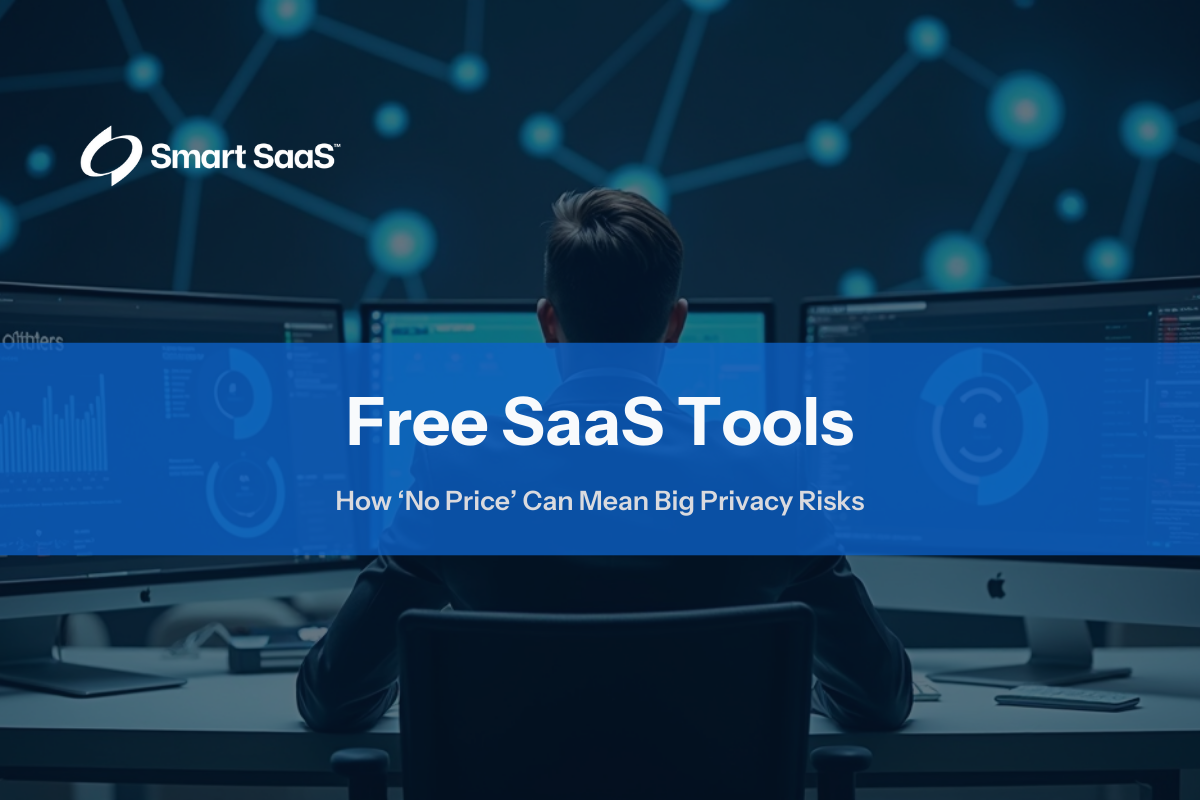

Wednesday, April 16, 2025
Kevin Anderson
In today’s fast-paced, digital‑first economy, free software tools are everywhere. From project management apps to collaboration platforms and file‑sharing services, companies of all sizes are lured in by the appeal of “free.” But there’s a catch—what you don’t pay in dollars, you often pay with data. And in the SaaS (Software‑as‑a‑Service) era, your business’s most sensitive information is the real currency.
This article pulls back the curtain on the hidden dangers of free SaaS tools. We’ll explore how they operate, why your data might be more exposed than you think, and how businesses can stay compliant and secure—all while aligning with best practices from our Data Privacy in the SaaS Era eBook.

The business model of many free SaaS platforms hinges on data monetization. While users aren't handing over credit cards, they often consent—knowingly or not—to vast amounts of data collection.
Key Takeaways:
Real‑World Tie‑In:
Zoom’s $85 million privacy settlement in 2021 exposed how easy it is for companies to share user data with giants like Facebook and LinkedIn, even without explicit user consent.
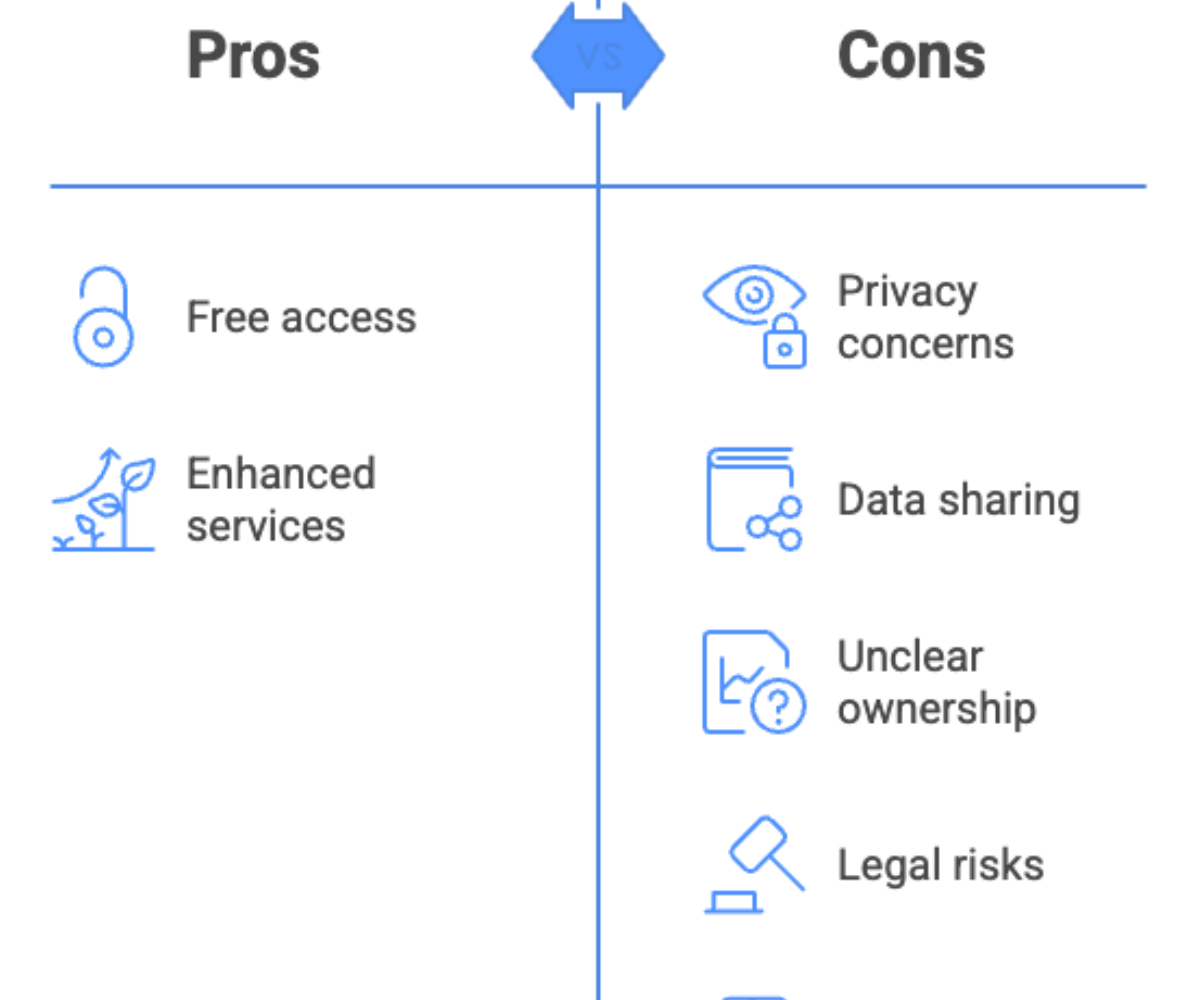

Short answer: Not necessarily. Free SaaS providers may lack robust privacy and security protocols. Worse, many reserve the right to share or even sell your data to third‑party marketers or partners. It’s critical to read the fine print—and understand what’s at stake.
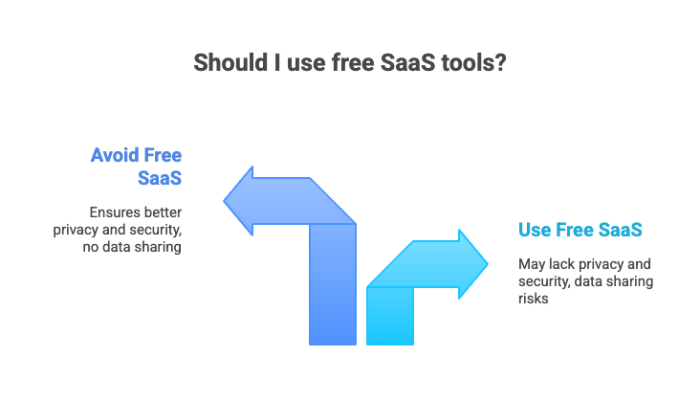

The “freemium” model—a basic version of the software for free, with premium features behind a paywall—is now common. While this seems beneficial, many freemium tools monetize by tracking user behavior and sharing in‑app analytics with marketers and ad‑tech networks.
Risky Practices to Watch:
Example: Shopify claims not to sell user data. Yet, its privacy policy outlines how personal information is disclosed to advertising networks—showing the gray zone between “sharing” and “selling.”
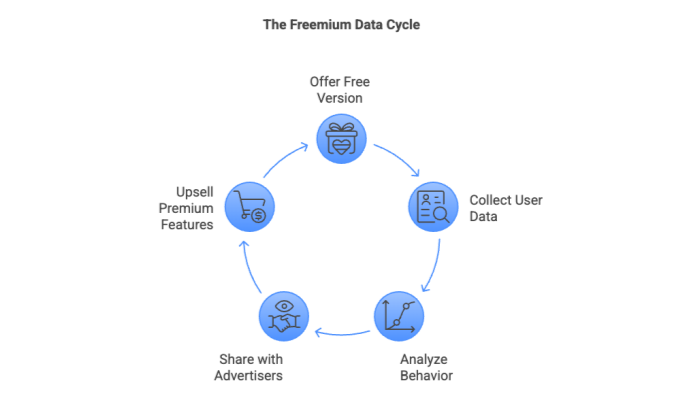

As the saying goes: “If you’re not paying for the product, you are the product.” For SaaS platforms, this means:
Entities to watch—Google Workspace, Slack, Trello—their free versions are analytics machines collecting data behind the scenes.
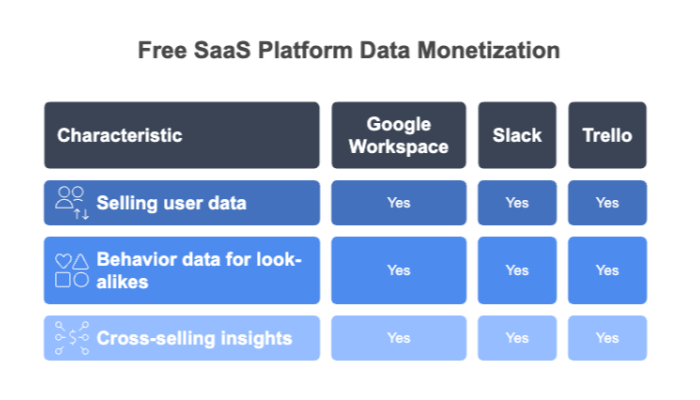

Clicking “accept” might be all it takes to hand over your business data. You could be agreeing to:
What Clauses Should I Look For?
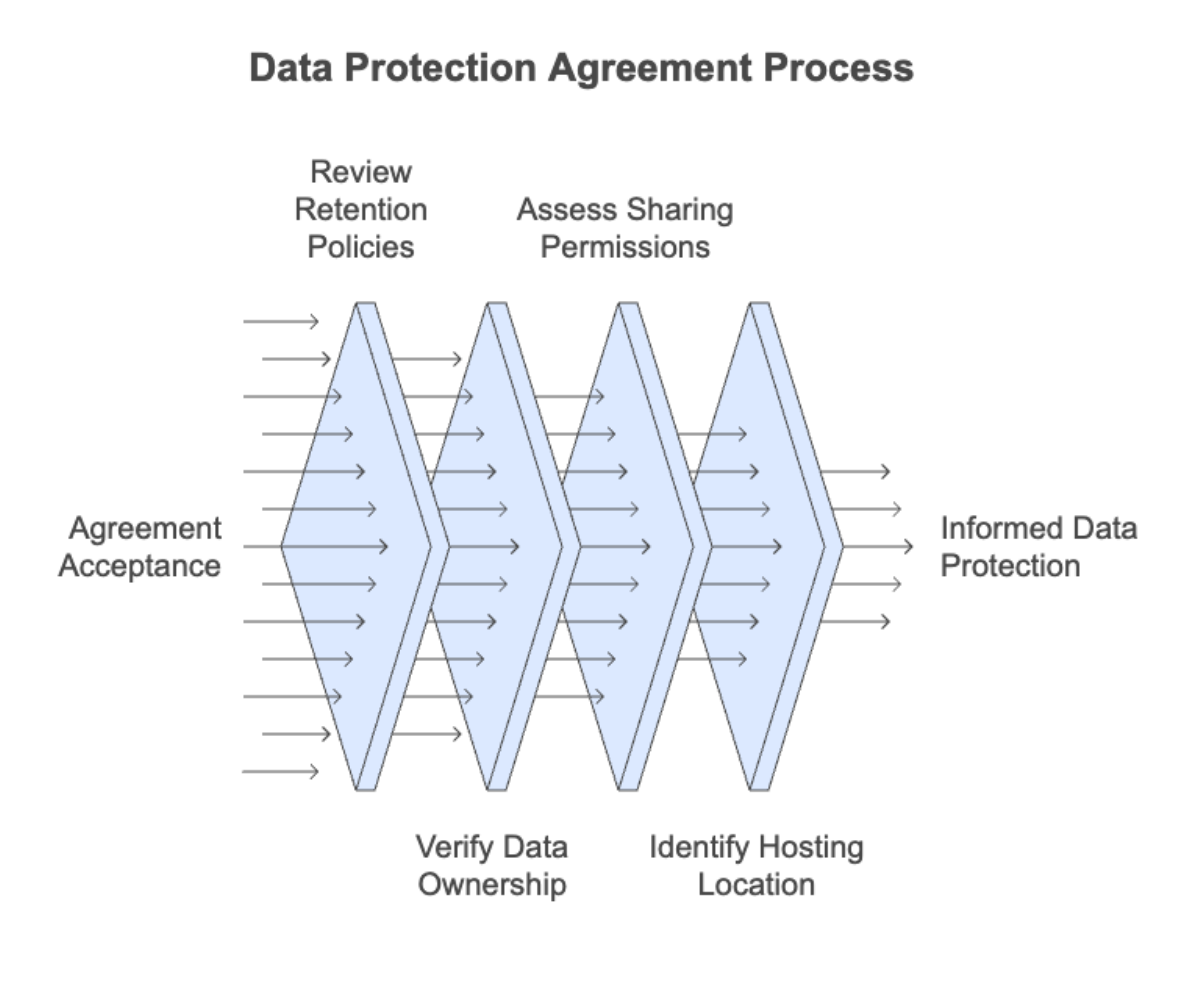

Free tools rarely offer GDPR, CCPA, or HIPAA support by default. This puts your business at risk of non‑compliance, especially if you're handling sensitive or regulated data.
Common Gaps:
The eBook explains how regulatory fundamentals differ by region—and why legal and compliance input is essential in every SaaS decision.
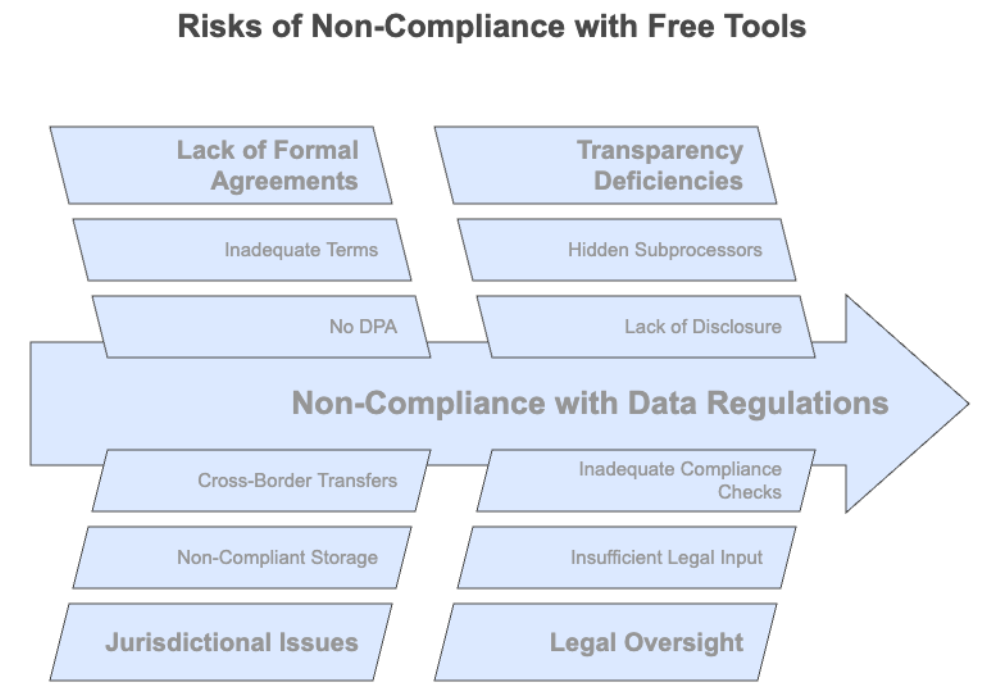

Using insecure or non‑compliant SaaS tools can lead to:
Case in Point: PayPal’s privacy policy update (Nov 2024) now includes automatic sharing of personal shopping behavior—unless users opt out. That kind of default setting damages trust.
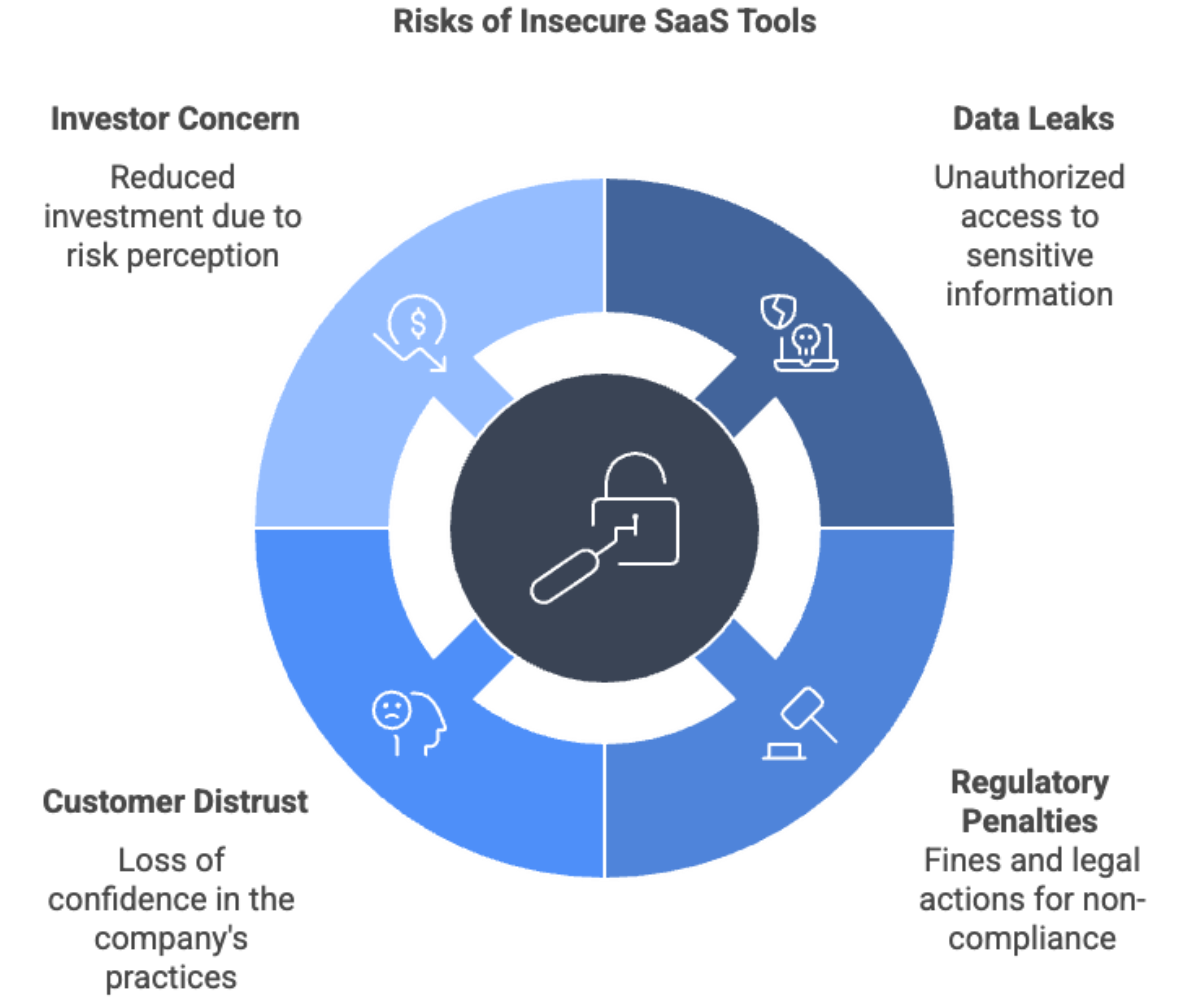

| Privacy Focus | Security Focus |
|---|---|
| Who can access data | How data is protected |
| Data sharing policies | Defense against breaches |
| Consent management | Threat monitoring |
Bottom line: Don’t settle for encryption without clarity on consent and usage.

Ask these before onboarding any free SaaS tool:
Use the eBook’s full privacy checklist as a smart starting point.
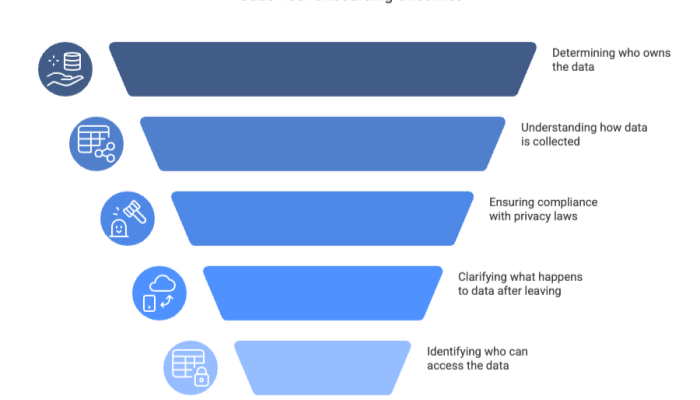

Protect your business from the inside out. Implement policies like:
Empower your employees to make privacy-conscious software decisions aligned with Smart SaaS principles.
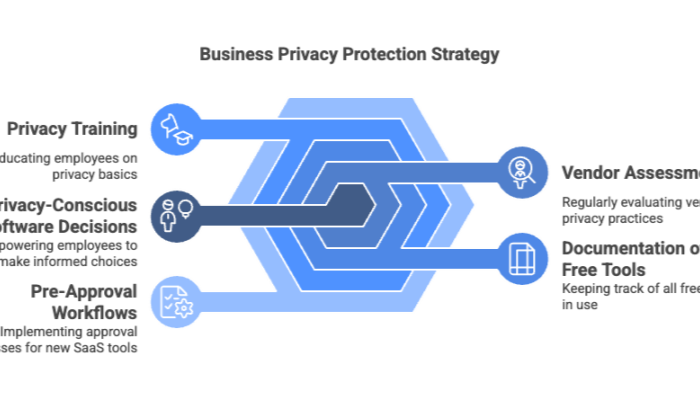

Premium SaaS subscriptions often include:
Example: Asana’s data residency options are only available at the Enterprise tier. Privacy often comes with a price tag—but it’s worth it.


Even modest privacy breaches can erode consumer trust and brand equity faster than any marketing campaign can build them. Consider the opportunity cost: every hour spent remediating a breach is an hour not spent innovating, and every dollar directed toward fines is a dollar not invested in growth. Paid subscriptions that guarantee compliance, data residency, and tailored DPAs transform privacy from a liability into a competitive differentiator. In today’s trust‑driven economy, that differentiation often justifies the premium.
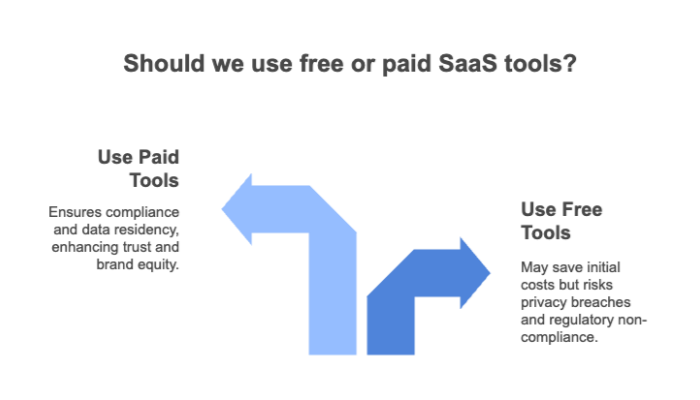

Free SaaS tools might save you money today—but expose you to privacy risks that cost far more in the long run. Data misuse, legal penalties, and reputation damage are real consequences. Make Smart SaaS™ decisions by reading between the lines, vetting vendors thoroughly, and building internal privacy guardrails. Ready to go deeper?
Download the full eBook: Data Privacy in the SaaS Era and make privacy‑first software decisions your company’s default.
